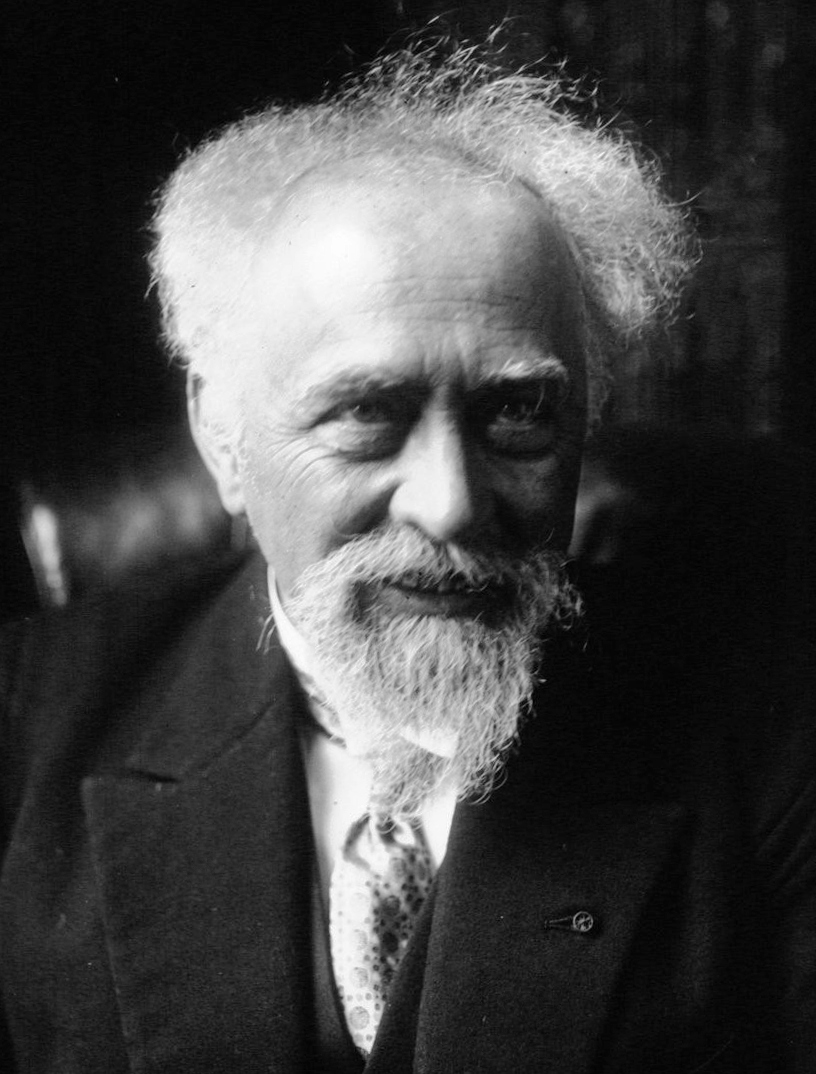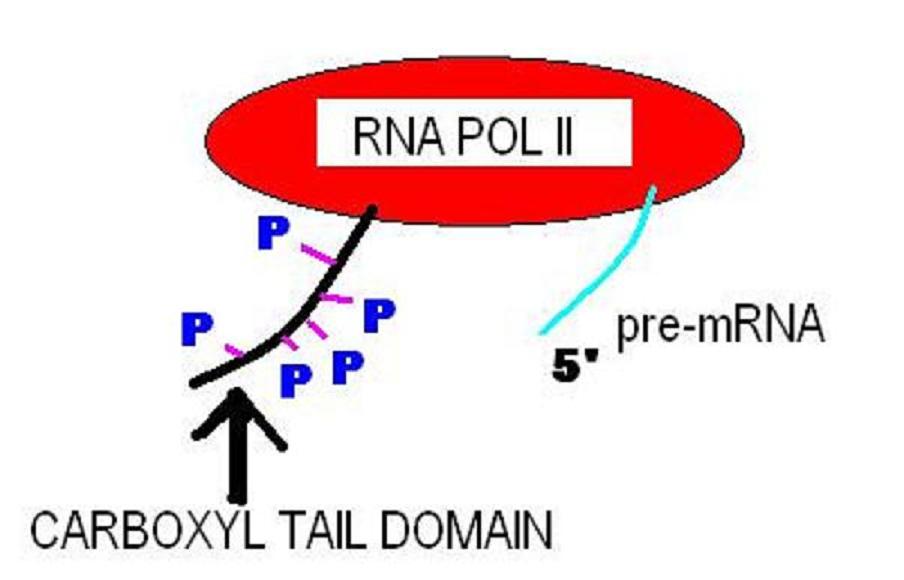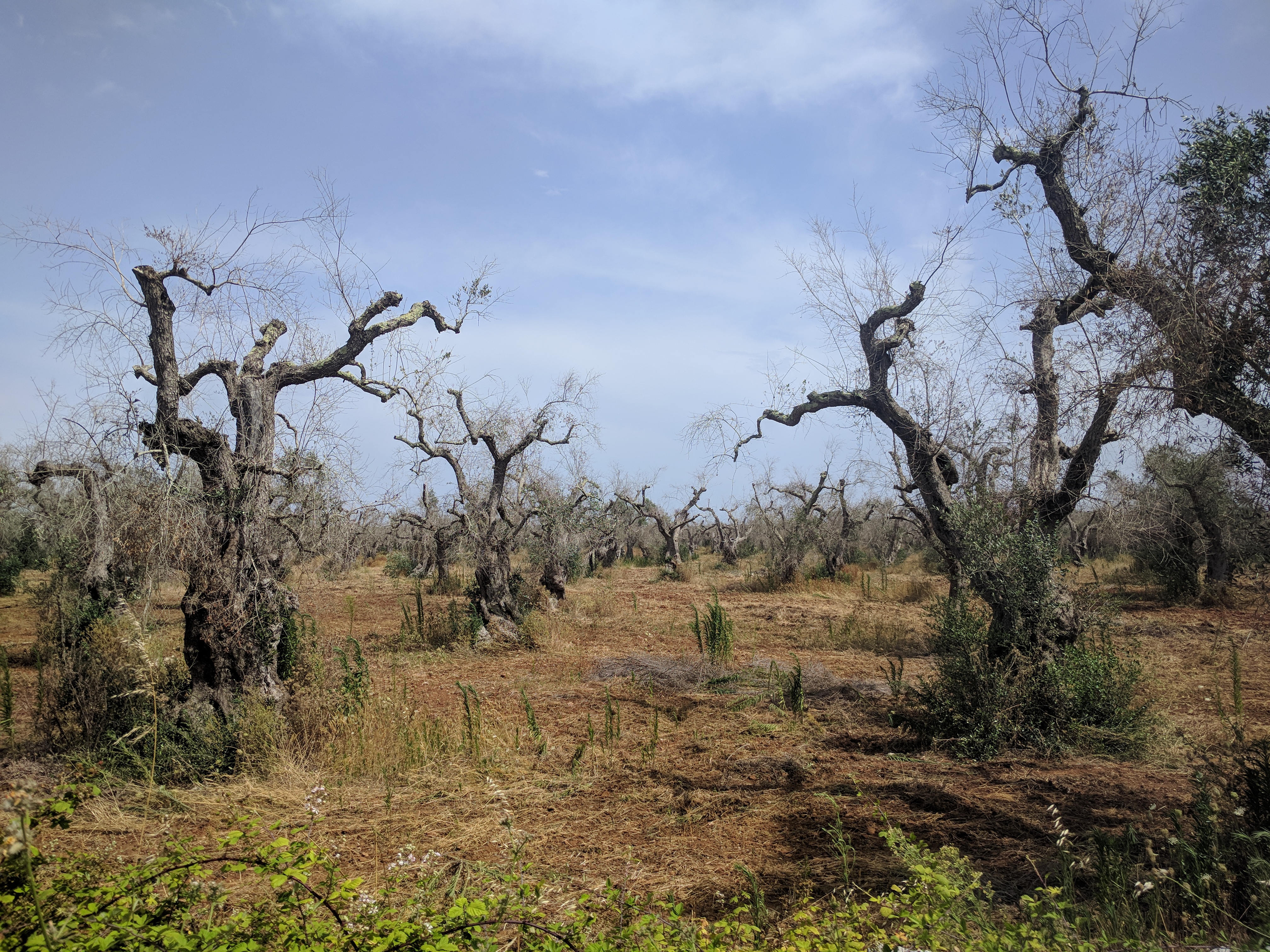|
P35 Holin Family
The PRD1 Phage P35 Holin (P35 Holin) FamilyTC# 1.E.5 is a member of Holin Superfamily III. The prototype for this family is the lipid-containing PRD1 enterobacterial phage holin protein P35 (12.8 kDaTC# 1.E.5.1.1 encoded by gene ''XXXV'' (''orfT''). It is a component of a typical holin-endolysin system which functions to lyse the host bacterial cell. Structure P35 holinTC# 1.E.5.1.1 has 3 transmembrane segments (TMSs) with 5 positively charged residues between TMSs 1 and 2. It has 4 positively charged residues at the C-terminus. It is therefore thought that the N-terminus is in the periplasm and the C-terminus is in the cytoplasm. Homologues of 109 amino acyl residues (aas), which also have 3 putative TMSs, are encoded in the genomes of ''Xylella fastidiosa'' strains. Function The reaction catalyzed by P35 holin is: : autolysin (in) → autolysin (out) See also * Bacteriophage * Phage typing * Holin * Lysin Lysins, also known as endolysins or murein hydrolases, are hydro ... [...More Info...] [...Related Items...] OR: [Wikipedia] [Google] [Baidu] |
Holin Superfamily III
The Holin Superfamily III is a superfamily of integral membrane transport proteins. It is one of the seven different holin superfamilies in total. In general, these proteins are thought to play a role in regulated cell death, although functionality varies between families and individual members. Members of the holin superfamily III are derived from Pseudomonadota, Synergistota, Actinomycetota, Deinococcota, and Archaea. This superfamily includes seven TC families: 1.E.2- The λ Holin S (λ Holin) Family 1.E.3- The P2 Holin (P2 Holin) Family 1.E.4- The LydA Holin (LydA Holin) Family 1.E.5- The PRD1 Phage P35 Holin (P35 Holin) Family 1.E.20- The ''Pseudomonas aeruginosa'' Hol Holin (Hol Holin) Family 1.E.34- The Putative Actinobacterial Holin-X (Hol-X) Family 1.E.41- The Deinococcus/Thermus Holin (D/T-Hol) Family Members of all families (with the exception of the Hol-X familyTC# 1.E.34 appear to have three transmembrane segments (TMSs). Members of the Hol-X family appear to h ... [...More Info...] [...Related Items...] OR: [Wikipedia] [Google] [Baidu] |
Kilodalton
The dalton or unified atomic mass unit (symbols: Da or u) is a non-SI unit of mass widely used in physics and chemistry. It is defined as of the mass of an unbound neutral atom of carbon-12 in its nuclear and electronic ground state and at rest. The atomic mass constant, denoted ''m''u, is defined identically, giving . This unit is commonly used in physics and chemistry to express the mass of atomic-scale objects, such as atoms, molecules, and elementary particles, both for discrete instances and multiple types of ensemble averages. For example, an atom of helium-4 has a mass of . This is an intrinsic property of the isotope and all helium-4 atoms have the same mass. Acetylsalicylic acid (aspirin), , has an average mass of approximately . However, there are no acetylsalicylic acid molecules with this mass. The two most common masses of individual acetylsalicylic acid molecules are , having the most common isotopes, and , in which one carbon is carbon-13. The molecular ... [...More Info...] [...Related Items...] OR: [Wikipedia] [Google] [Baidu] |
Lysis
Lysis ( ) is the breaking down of the membrane of a cell, often by viral, enzymic, or osmotic (that is, "lytic" ) mechanisms that compromise its integrity. A fluid containing the contents of lysed cells is called a ''lysate''. In molecular biology, biochemistry, and cell biology laboratories, cell cultures may be subjected to lysis in the process of purifying their components, as in protein purification, DNA extraction, RNA extraction, or in purifying organelles. Many species of bacteria are subject to lysis by the enzyme lysozyme, found in animal saliva, egg white, and other secretions. Phage lytic enzymes (lysins) produced during bacteriophage infection are responsible for the ability of these viruses to lyse bacterial cells. Penicillin and related β-lactam antibiotics cause the death of bacteria through enzyme-mediated lysis that occurs after the drug causes the bacterium to form a defective cell wall. If the cell wall is completely lost and the penicillin was used on gram ... [...More Info...] [...Related Items...] OR: [Wikipedia] [Google] [Baidu] |
C-terminus
The C-terminus (also known as the carboxyl-terminus, carboxy-terminus, C-terminal tail, C-terminal end, or COOH-terminus) is the end of an amino acid chain (protein or polypeptide), terminated by a free carboxyl group (-COOH). When the protein is translated from messenger RNA, it is created from N-terminus to C-terminus. The convention for writing peptide sequences is to put the C-terminal end on the right and write the sequence from N- to C-terminus. Chemistry Each amino acid has a carboxyl group and an amine group. Amino acids link to one another to form a chain by a dehydration reaction which joins the amine group of one amino acid to the carboxyl group of the next. Thus polypeptide chains have an end with an unbound carboxyl group, the C-terminus, and an end with an unbound amine group, the N-terminus. Proteins are naturally synthesized starting from the N-terminus and ending at the C-terminus. Function C-terminal retention signals While the N-terminus of a protein often co ... [...More Info...] [...Related Items...] OR: [Wikipedia] [Google] [Baidu] |
N-terminus
The N-terminus (also known as the amino-terminus, NH2-terminus, N-terminal end or amine-terminus) is the start of a protein or polypeptide, referring to the free amine group (-NH2) located at the end of a polypeptide. Within a peptide, the amine group is bonded to the carboxylic group of another amino acid, making it a chain. That leaves a free carboxylic group at one end of the peptide, called the C-terminus, and a free amine group on the other end called the N-terminus. By convention, peptide sequences are written N-terminus to C-terminus, left to right (in LTR writing systems). This correlates the translation direction to the text direction, because when a protein is translated from messenger RNA, it is created from the N-terminus to the C-terminus, as amino acids are added to the carboxyl end of the protein. Chemistry Each amino acid has an amine group and a carboxylic group. Amino acids link to one another by peptide bonds which form through a dehydration reaction ... [...More Info...] [...Related Items...] OR: [Wikipedia] [Google] [Baidu] |
Xylella Fastidiosa
''Xylella fastidiosa'' is an aerobic, Gram-negative bacterium of the genus ''Xylella''. It is a plant pathogen, that grows in the water transport tissues of plants ( xylem vessels) and is transmitted exclusively by xylem sap-feeding insects such as sharpshooters and spittlebugs. Many plant diseases are due to infections of ''X. fastidiosa'', including bacterial leaf scorch, oleander leaf scorch, coffee leaf scorch (CLS), alfalfa dwarf, phony peach disease, and the economically important Pierce's disease of grapes (PD), olive quick decline syndrome (OQDS), and citrus variegated chlorosis (CVC). While the largest outbreaks of ''X. fastidiosa''–related diseases have occurred in the Americas and Europe, this pathogen has also been found in Taiwan, Israel, and a few other countries worldwide. ''Xylella fastidiosa'' can infect an extremely wide range of plants, many of which do not show any symptoms of disease. Disease occurs in plant species that are susceptible due to blockage of w ... [...More Info...] [...Related Items...] OR: [Wikipedia] [Google] [Baidu] |
Bacteriophage
A bacteriophage (), also known informally as a ''phage'' (), is a duplodnaviria virus that infects and replicates within bacteria and archaea. The term was derived from "bacteria" and the Greek φαγεῖν ('), meaning "to devour". Bacteriophages are composed of proteins that encapsulate a DNA or RNA genome, and may have structures that are either simple or elaborate. Their genomes may encode as few as four genes (e.g. MS2) and as many as hundreds of genes. Phages replicate within the bacterium following the injection of their genome into its cytoplasm. Bacteriophages are among the most common and diverse entities in the biosphere. Bacteriophages are ubiquitous viruses, found wherever bacteria exist. It is estimated there are more than 1031 bacteriophages on the planet, more than every other organism on Earth, including bacteria, combined. Viruses are the most abundant biological entity in the water column of the world's oceans, and the second largest component of ... [...More Info...] [...Related Items...] OR: [Wikipedia] [Google] [Baidu] |
Phage Typing
Phage typing is a phenotypic method that uses bacteriophages ("phages" for short) for detecting and identifying single strains of bacteria. Phages are viruses that infect bacteria and may lead to bacterial cell lysis. The bacterial strain is assigned a type based on its lysis pattern. Phage typing was used to trace the source of infectious outbreaks throughout the 1900s, but it has been replaced by genotypic methods such as whole genome sequencing for epidemiological characterization. Principle Phage typing is based on the specific binding of phages to antigens and receptors on the surface of bacteria and the resulting bacterial lysis or lack thereof. The binding process is known as adsorption. Once a phage adsorbs to the surface of a bacteria, it may undergo either the lytic cycle or the lysogenic cycle. Virulent phages enter the lytic cycle where they replicate and lyse the bacterial cell. Virulent phages can differentiate between different species of bacteria based on their ... [...More Info...] [...Related Items...] OR: [Wikipedia] [Google] [Baidu] |
Holin
Holins are a diverse group of small proteins produced by dsDNA bacteriophages in order to trigger and control the degradation of the host's cell wall at the end of the lytic cycle. Holins form pores in the host's cell membrane, allowing lysins to reach and degrade peptidoglycan, a component of bacterial cell walls. Holins have been shown to regulate the timing of lysis with great precision. Over 50 unrelated gene families encode holins, making them the most diverse group of proteins with common function. Together with lysins, holins are being studied for their potential use as antibacterial agents. While canonical holins act by forming large pores, pinholins such as the S protein of lambdoid phage 21 act by forming heptameric channels that depolarize the bacterial membrane. They are associated with SAR endolysins, which remain inactive in the periplasm prior to the depolarization of the membrane. Viruses that infect eukaryotic cells may use similar channel-forming proteins call ... [...More Info...] [...Related Items...] OR: [Wikipedia] [Google] [Baidu] |
Lysin
Lysins, also known as endolysins or murein hydrolases, are hydrolytic enzymes produced by bacteriophages in order to cleave the host's cell wall during the final stage of the lytic cycle. Lysins are highly evolved enzymes that are able to target one of the five bonds in peptidoglycan (murein), the main component of bacterial cell walls, which allows the release of progeny virions from the lysed cell. Cell-wall-containing Archaea are also lysed by specialized pseudomurein-cleaving lysins, while most archaeal viruses employ alternative mechanisms. Similarly, not all bacteriophages synthesize lysins: some small single-stranded DNA and RNA phages produce membrane proteins that activate the host's autolytic mechanisms such as autolysins. Lysins are being used as antibacterial agents due to their high effectiveness and specificity in comparison with antibiotics, which are susceptible to bacterial resistance. Structure Double-stranded DNA phage lysins tend to lie within the 25 t ... [...More Info...] [...Related Items...] OR: [Wikipedia] [Google] [Baidu] |
Holins
Holins are a diverse group of small proteins produced by dsDNA bacteriophages in order to trigger and control the degradation of the host's cell wall at the end of the lytic cycle. Holins form pores in the host's cell membrane, allowing lysins to reach and degrade peptidoglycan, a component of bacterial cell walls. Holins have been shown to regulate the timing of lysis with great precision. Over 50 unrelated gene families encode holins, making them the most diverse group of proteins with common function. Together with lysins, holins are being studied for their potential use as antibacterial agents. While canonical holins act by forming large pores, pinholins such as the S protein of lambdoid phage 21 act by forming heptameric channels that depolarize the bacterial membrane. They are associated with SAR endolysins, which remain inactive in the periplasm prior to the depolarization of the membrane. Viruses that infect eukaryotic cells may use similar channel-forming proteins ca ... [...More Info...] [...Related Items...] OR: [Wikipedia] [Google] [Baidu] |




